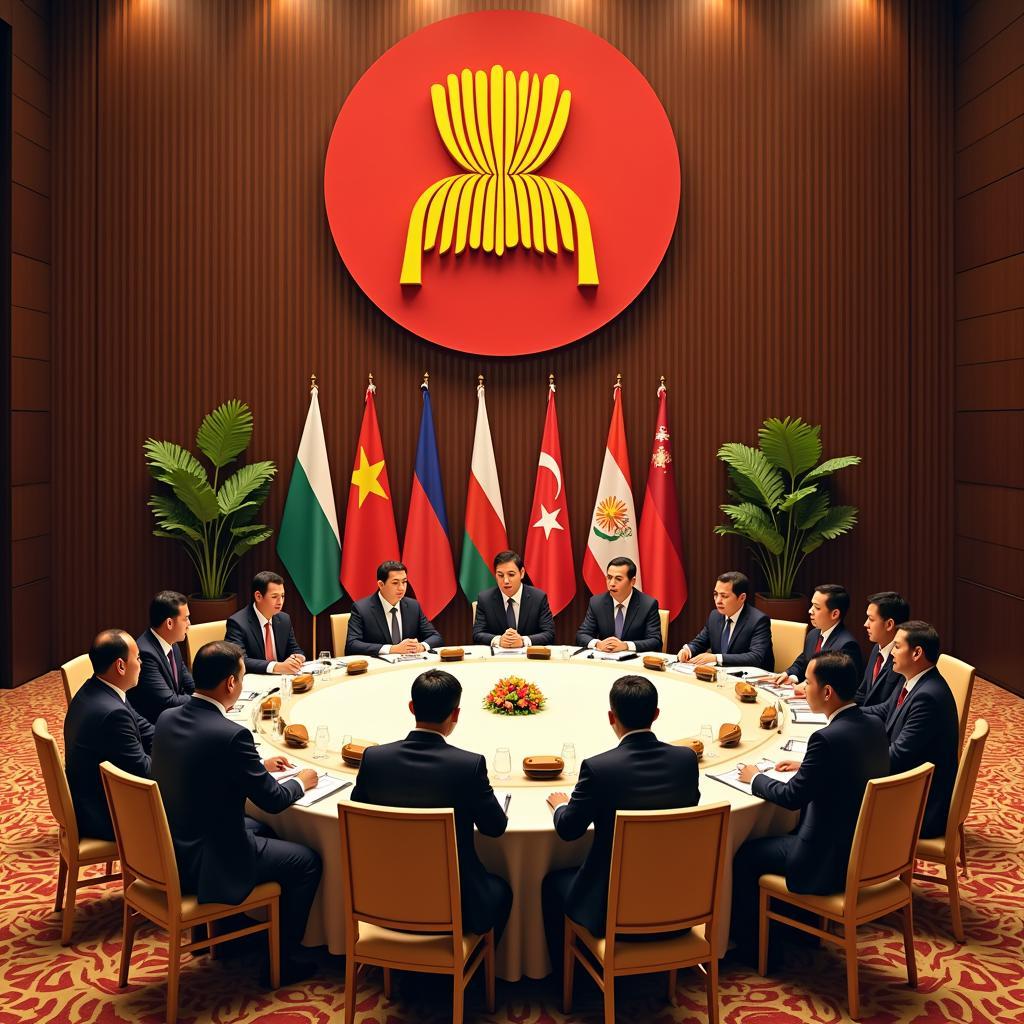Asean Burma relations have been a complex and evolving issue for decades. This relationship, shaped by political, economic, and social factors, plays a crucial role in the stability and development of Southeast Asia. Understanding the dynamics between ASEAN and Burma is key to comprehending the broader geopolitical landscape of the region.
Navigating the Political Landscape of ASEAN Burma Relations
The political landscape of ASEAN Burma relations has been dominated by the issue of democracy and human rights. Following the military coup in 2021, ASEAN has faced immense pressure to address the deteriorating situation in Burma. The organization’s Five-Point Consensus, aimed at restoring peace and stability, has seen limited progress, leading to debates about ASEAN’s effectiveness in dealing with internal conflicts of member states. This highlights the challenges faced by ASEAN in balancing its principles of non-interference with the need to uphold democratic values and protect human rights.
The Alternative ASEAN Network on Burma has played a significant role in advocating for stronger action from ASEAN. Their efforts reflect the growing calls for a more robust and decisive approach to the crisis.
alternative asean network on burma
What has been ASEAN’s response to the political situation in Burma? ASEAN has implemented the Five-Point Consensus, which includes calls for dialogue, humanitarian assistance, and an end to violence. However, the implementation has been challenging.
The Economic Impact of ASEAN Burma Relations
Beyond the political sphere, economic ties between ASEAN and Burma are significant. Burma’s strategic location and natural resources make it an important player in regional economic integration. However, the ongoing political instability has created uncertainty for investors and hindered economic growth. ASEAN’s efforts to support economic development in Burma are crucial for the overall prosperity of the region.
What are the key economic sectors impacted by the ASEAN Burma relationship? Key sectors include trade, investment, and tourism. The political situation has had a significant impact on these sectors, creating both challenges and opportunities.
Understanding the Social and Cultural Dimensions
ASEAN’s engagement with Burma extends beyond political and economic considerations. The social and cultural dimensions are equally important. Promoting people-to-people connections, cultural exchanges, and educational cooperation fosters understanding and strengthens regional identity.
How does ASEAN promote social and cultural exchange with Burma? ASEAN facilitates various programs and initiatives that promote cultural exchange, education, and people-to-people connections to foster understanding and build a stronger regional identity.
ASEAN’s Role in Regional Stability
ASEAN’s role in maintaining regional stability is paramount. The organization’s ability to effectively address the Burma crisis has implications for its credibility and its capacity to manage future challenges. Finding a sustainable solution to the situation in Burma is essential for ensuring peace and security in Southeast Asia.
What is the significance of the 25th ASEAN Summit in Myanmar? The 25th ASEAN Summit held in Myanmar in 2014 marked a significant milestone in the country’s integration into the regional bloc.
“ASEAN’s engagement with Burma must prioritize a people-centered approach, focusing on the needs and aspirations of the Burmese people,” says Dr. Aung San Suu Kyi, a prominent Burmese political figure.
“The international community must support ASEAN’s efforts to find a peaceful and sustainable solution to the crisis in Burma,” adds Dr. Khin Maung Win, a leading expert on Southeast Asian politics. A robust response is essential for the stability of the entire region.
 ASEAN and Regional Stability
ASEAN and Regional Stability
The Future of ASEAN Burma Relations
The future of ASEAN Burma relations remains uncertain. However, ASEAN’s continued engagement is crucial for finding a path towards a more stable and democratic Burma. This requires a multifaceted approach that addresses political, economic, and social dimensions. The international community also plays a vital role in supporting ASEAN’s efforts and holding the military regime accountable.
ASEAN Burma 2014 marked a turning point in their relationship.
Who are the members of ASEAN? Understanding ASEAN’s composition is key to understanding its dynamics. For more information, visit All 10 Countries of ASEAN.
For further insight into ASEAN membership, see Who is in ASEAN?
In conclusion, the ASEAN Burma relationship is a multifaceted and complex issue with significant implications for regional stability and development. ASEAN’s continued engagement, coupled with international support, is vital for navigating the challenges and promoting a more peaceful and prosperous future for Burma and the entire Southeast Asian region.
FAQ
- What is ASEAN’s Five-Point Consensus on Burma?
- How has the political situation in Burma impacted its economy?
- What role does ASEAN play in promoting regional stability?
- What are the key challenges facing ASEAN in its engagement with Burma?
- What are the prospects for the future of ASEAN Burma relations?
- How can the international community support ASEAN’s efforts in Burma?
- What are the main social and cultural implications of the ASEAN Burma relationship?
Need support? Contact us 24/7: Phone: 0369020373, Email: aseanmediadirectory@gmail.com, or visit us at Ngoc Lien Village, Hiep Hoa, Bac Giang, Vietnam.